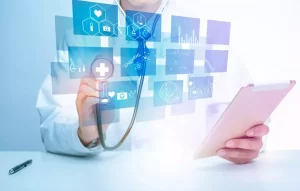Biofeedback and Self-Regulation – Using Technology to Improve Mind-Body Connection

Biofeedback helps you learn to voluntarily control bodily processes such as your heart rate and blood pressure, such as their natural fluctuations. It may even help treat conditions such as high blood pressure, migraine headaches, and chronic pain.
Study of primary care physicians and nurses found that using biofeedback devices reduced their perceived stress and job satisfaction levels. Research suggests thermal biofeedback may ease symptoms associated with Raynaud disease while EEG neurofeedback improves both behavior and intelligence among children with ADHD.
How Biofeedback Works
Biofeedback allows you to learn to control physiological functions such as heart rate, muscle tension, skin temperature and breathing rates for greater performance – this process is known as ‘biofeedback’.
Biofeedback sessions use electrodes or sensors on your fingers and toes to measure signals from your body’s automatic systems, such as heart rate, blood pressure, breathing and sweating. The information is fed back through a monitor which displays sound or flashing lights to notify you when any physiological change has taken place.
Physical therapists sometimes use biofeedback therapy to teach individuals to relax pelvic floor muscles in order to reduce urinary incontinence or relieve pain, alleviate urinary incontinence or treat other health concerns like anxiety, high blood pressure, headache and Raynaud’s syndrome. If you have certain medical conditions such as an irregular heartbeat (Mayo Clinic), always consult with a healthcare provider first before beginning a session of any sort.
Biofeedback Devices
Biofeedback uses precise measurement instruments to quickly “feed back” information about physiological function such as brainwaves, heart rate and skin temperature to the user via computer monitor or sensors attached to their bodies. Unlike other treatments for stress and anxiety such as medications, biofeedback does not rely on medications alone for success.
Biofeedback may be an ideal solution for patients who prefer not to take medications or can no longer use them due to medical conditions; however, biofeedback requires motivation, practice and a willingness to work with a biofeedback therapist and device.
Biofeedback teaches us to control involuntary physiological functions like breathing, heart rate and muscle tension so we can harness their healing properties for therapeutic benefit. It has been found to assist with chronic pain management, IBS symptoms such as urinary incontinence and migraine headaches as well as chronic backache. Sessions usually last 30-60 minutes with multiple visits required depending on your condition and how quickly you regulate it.
Biofeedback Software
Biofeedback sessions use electrodes or finger sensors attached to your body that send signals to a monitor that displays sounds, flashes of light or images that represent your heart rate, breathing rate, skin temperature, sweating rate and muscle activity. By practicing relaxation techniques you can learn to control these functions.
Research indicates that biofeedback can help treat conditions such as headaches, fecal incontinence and Raynaud’s disease. Furthermore, biofeedback may help alleviate stress and anxiety as well as boost mental performance (sometimes known as peak performance training).
Though researchers do not fully understand how or why biofeedback works, they do know it promotes relaxation. Biofeedback may allow you to gain more control of your health and even help stop taking certain medicines for your condition – however it is always advisable to speak to your physician first before discontinuing any medical treatments.
Biofeedback Apps
Researchers believe that when we raise our hand to wave hello or lift our knee to take another step on the Stairmaster, these are conscious movements controlled by us consciously. But many body functions, like heart rate, skin temperature, blood pressure and muscle activity are managed involuntary by the nervous system.
Biofeedback devices involve wearing electrode pads on their fingers or toes and viewing information displayed on a monitor – this may include flashing lights, pictures of their own physiology being monitored or computer-generated graphs depicting physiological responses from each person being tested.
Therapists can teach patients relaxation techniques designed to work with biofeedback devices, and assist in practicing them at home without needing the device. Results typically take time; patients should check with their insurance provider to see whether this form of therapy is covered under their plan.







